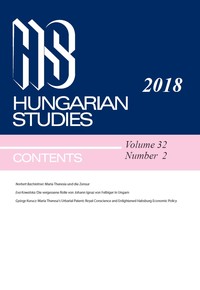THE MAJOR CHARACTERISTICS OF THE GENERAL DEVELOPMENT OF THE TOURISM INDUSTRY IN HUNGARY BETWEEN THE TWO WORLD WARS – THE CHALLENGES OF REORGANISING AND REPOSITIONING TOURISM
THE MAJOR CHARACTERISTICS OF THE GENERAL DEVELOPMENT OF THE TOURISM INDUSTRY IN HUNGARY BETWEEN THE TWO WORLD WARS – THE CHALLENGES OF REORGANISING AND REPOSITIONING TOURISM
Author(s): János Csapó, András Törzsök, István GalambosSubject(s): Interwar Period (1920 - 1939), Tourism
Published by: Akadémiai Kiadó
Keywords: Hungary; tourism; interwar period; reorganising; repositioning
Summary/Abstract: In 1920 the Treaty of Trianon concluding WWI caused the Hungarian Kingdom to lose not only two-thirds of its area and population, but the country’s most important tourism destinations as well. This is the reason why the “domestic values” of the country were valorised in the following period in terms of tourism. Both the remaining tourism supply and the demand had to face significant changes; for instance, the paying guest system was introduced in Hungary at the time in question. Some new investments were made from 1922 onwards in these destinations, such as the establishment of holiday camps and hotels, but the development of tourism was primarily supported through government regulations and the creation of national and regional tourism authorities. Due to these investments and innovations the interwar period became a flourishing era for domestic tourism.
- Issue Year: 33/2019
- Issue No: 2
- Page Range: 385-405
- Page Count: 21
- Language: English
- Content File-PDF

